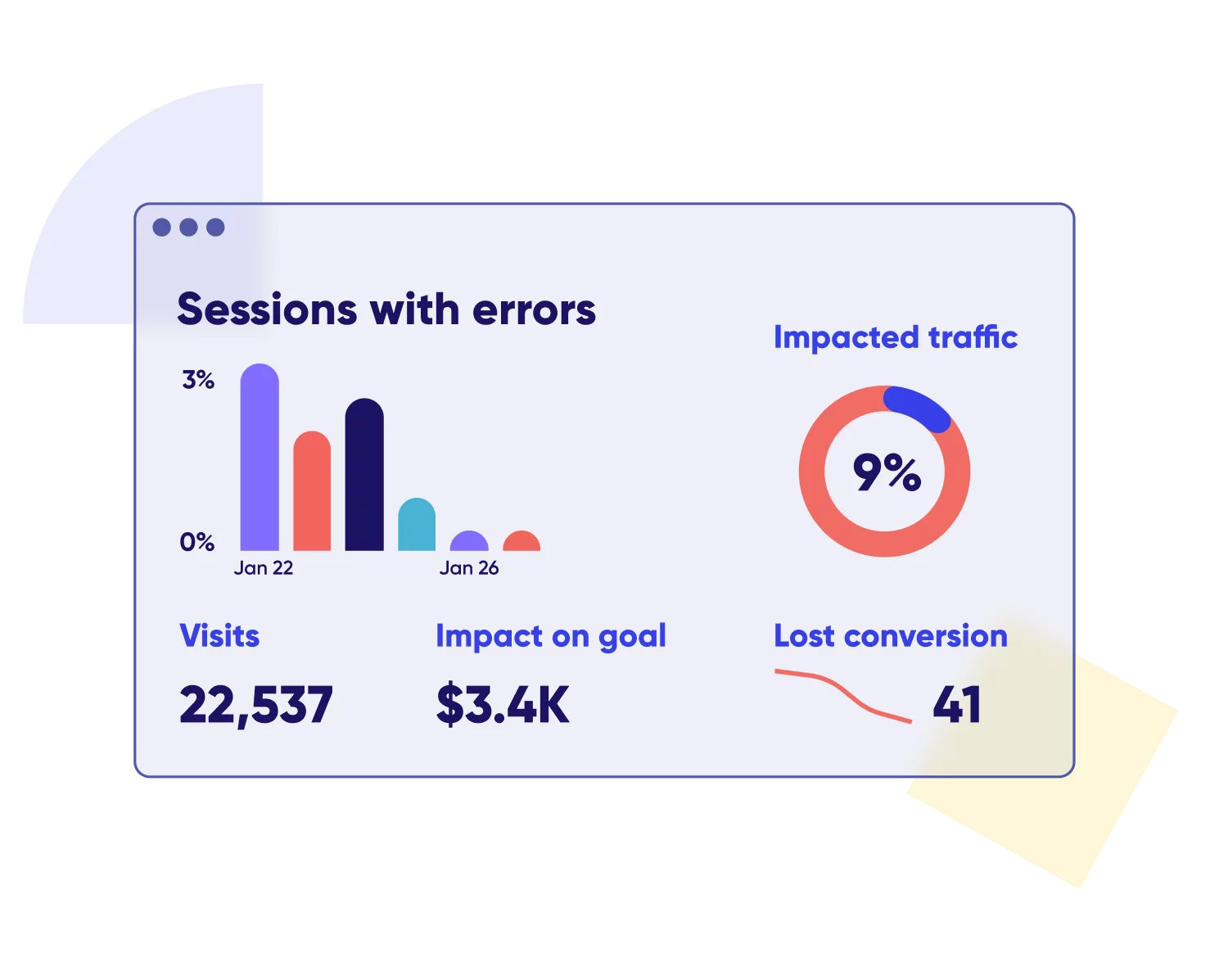
Fix the errors that hurt the worst.

Analytics in User Experience (UX) Design is a data-driven approach that integrates data analysis, business intelligence, and data visualization to optimize the user experience. It involves leveraging big data to understand user behavior, preferences, and trends, thereby informing the design and functionality of a product or service.
The primary objective of UX Design Analytics is to enhance the user experience by identifying and addressing the users’ needs, ultimately leading to increased user satisfaction and engagement. The application of analytics in UX Design utilizes various methods and tools such as web analytics, heatmaps, user session recordings, data science techniques, and user feedback surveys. Each tool offers different types of data and insights, making them suitable for different stages of the UX Design process.
For example, heatmaps provide a visual representation of user behavior on a webpage, while user session recordings offer a more detailed view of individual user interactions.
In UX Design, the use of analytics extends beyond the digital space. For instance, retail stores can apply predictive modeling and machine learning to track customer behavior and preferences, optimizing store layout and product placement. Similarly, service providers can utilize data analysis to identify customer behavior trends, enabling the tailoring of services to meet specific customer needs and expectations.
The power of customer journey data: improving your business strategy
Analytics Design is a specialized area of UX Design that focuses on the use of data and analytics to inform design decisions. It involves the collection, analysis, and interpretation of user data, which is then used to improve the design and functionality of the product or service.
The goal of Analytics Design is to create a user-centric design that meets the needs and expectations of the users, thereby enhancing their experience and satisfaction. In the context of web design, Analytics Design may involve the use of various tools and techniques, such as web analytics, user session recordings, heatmaps, and A/B testing. These tools provide valuable insights into user behavior, preferences, and trends, which can be used to inform design decisions.
For example, heatmaps can show which areas of a webpage are most frequently interacted with by the users, while A/B testing can help determine which design variant performs better in terms of user engagement and conversion. Analytics Design is not a one-time process, but rather an ongoing cycle of data collection, analysis, design implementation, and evaluation.
This iterative process allows for continuous improvement and refinement of the design, ensuring that it remains relevant and effective in meeting the evolving needs and expectations of the users.
Fix the errors that hurt the worst.
Analytics plays a crucial role in UX Design for several reasons.
Firstly, it provides objective data and insights into user behavior, preferences, and trends. This data can be used to inform design decisions, ensuring that the design is user-centric and meets the needs and expectations of the users.
Secondly, analytics allows for the evaluation of design performance. By tracking key performance indicators (KPIs), designers can assess the effectiveness of the design in achieving its intended goals, and make necessary adjustments if needed.
Moreover, analytics can help identify and address user pain points. By analyzing user behavior and feedback, designers can identify areas of the product or service that are causing frustration or confusion for the users, and take steps to address these issues.
This not only improves the user experience, but also increases user satisfaction and retention. Lastly, analytics can help validate design decisions. Through A/B testing and other forms of user testing, designers can compare different design variants and determine which one performs better in terms of user engagement and conversion. This not only ensures that the design is effective, but also reduces the risk of implementing a design that does not resonate with the users.
Fix the errors that hurt the worst.
Analytics UX design is a complex field that involves the application of data science, machine learning, and predictive modeling principles. The primary challenge in this field is the representation of large volumes of big data in an intuitive manner. This necessitates a deep understanding of data visualization principles, and the ability to translate complex data sets into easily digestible visual representations.
Another significant challenge in analytics UX design is the need for real-time data representation. In the fast-paced world of business intelligence, decision-makers require up-to-the-minute data to inform their strategic planning.
This places considerable pressure on UX designers to create interfaces that can handle real-time data feeds and present them in a manner that is both accurate and immediately understandable. Customization is another major challenge in analytics UX design. Given the unique nature of every business, UX designers need to create flexible and customizable interfaces that can accommodate a wide range of data types and structures. This requires a high degree of creativity and problem-solving skills, as well as a deep understanding of the specific needs and objectives of the end user.
Lastly, with the rise in cyber threats, UX designers must also ensure that the interfaces they create are secure, requiring a deep understanding of data encryption and cybersecurity principles.
Dashboard design, a key component of analytics design, is a complex task marked by a number of challenges. The primary issue facing designers in this field is the need for simplicity and clarity in data visualization. A dashboard must present a large amount of big data in a concise and easily understandable format, avoiding unnecessary clutter and confusion. Interactivity is another major challenge in dashboard creation.
Users need to be able to interact with the data presented on the dashboard, manipulating it to suit their specific needs and objectives. This necessitates the integration of interactive elements into the information architecture of the dashboard, which can add to the complexity of the design process. The need for real-time data representation is also a significant challenge in dashboard design. In the realm of business intelligence, decision-makers require up-to-the-minute data for effective data analysis and reporting. This places considerable pressure on designers to create dashboards capable of handling real-time data feeds and presenting them accurately.
Lastly, customization is a significant challenge in dashboard creation.
Every business has unique data needs, and therefore, every dashboard must be customizable to accommodate these needs. Designers must be able to create flexible and adaptable dashboards that can handle a wide range of data types and structures, requiring a high degree of creativity and problem-solving skills.
Fix the errors that hurt the worst.